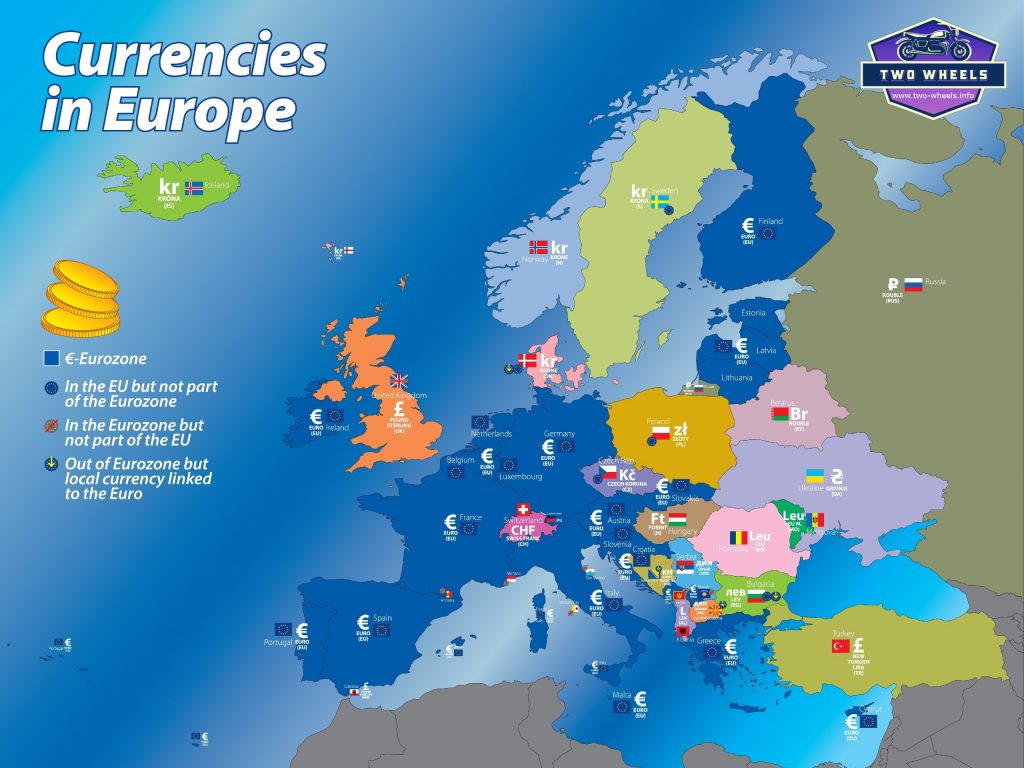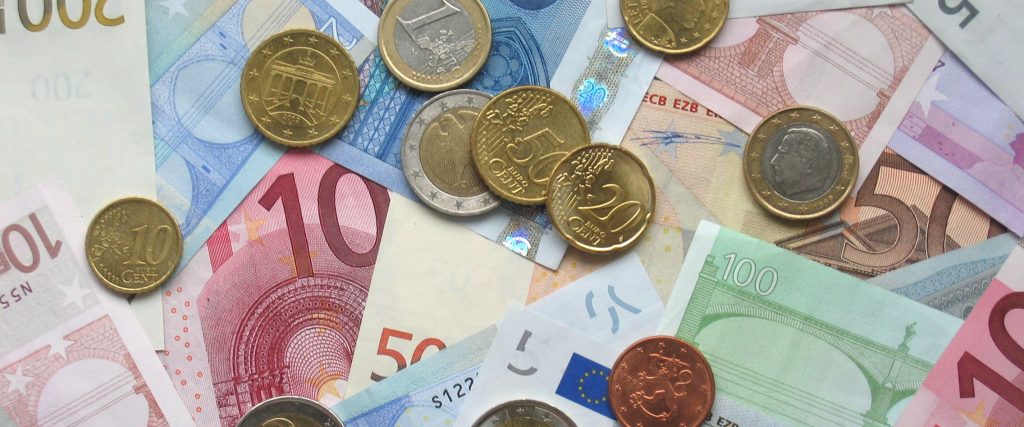The euro is the official currency of 20 of the 27 member states of the European Union. This group of states is officially known as the euro area or, more commonly, the eurozone. The euro is divided into 100 euro cents.
The euro is officially utilized by the institutions of the European Union, four European microstates that are not EU members the British Overseas Territory of Akrotiri and Dhekelia, unilaterally by Montenegro and Kosovo.
Additionally, several special territories of EU member states outside Europe also adopted the euro as their currency.

The euro is used by 350 million people in Europe and additionally, over 200 million people worldwide use currencies pegged to the euro. It is the second-largest reserve currency as well as the second-most traded currency in the world after the United States dollar.
 Andorra
Andorra Austria
Austria Belgium
Belgium Croatia
Croatia Cyprus
Cyprus Estonia
Estonia Finland
Finland France (including; French Guiana, Guadeloupe, Martinique, Saint Martin, Mayotte, Réunion)
France (including; French Guiana, Guadeloupe, Martinique, Saint Martin, Mayotte, Réunion) Germany
Germany Greece
Greece Ireland
Ireland Italy
Italy Kosovo
Kosovo Latvia
Latvia Lithuania
Lithuania Luxembourg
Luxembourg Malta
Malta Monaco
Monaco Montenegro
Montenegro Netherlands
Netherlands Portugal (including; Azores, Madeira)
Portugal (including; Azores, Madeira) San Marino
San Marino Slovakia
Slovakia Slovenia
Slovenia Spain (including; Canary Islands)
Spain (including; Canary Islands) Vatican City
Vatican City
The following five EU member states, representing almost 90 million people, committed themselves in their respective Treaty of Accession to adopt the euro. However they do not have a deadline to do so and can delay the process by deliberately not complying with the convergence criteria (such as by not meeting the convergence criteria to join ERM II). Romania have in place government policies on the adoption of the euro as soon as they have met the convergence criteria, while the four remaining states are not currently actively pursuing euro adoption.
 Czech Republic
Czech Republic Hungary
Hungary Poland
Poland Romania: The Romanian government aims to use the euro by 2029.
Romania: The Romanian government aims to use the euro by 2029. Sweden
Sweden

Please note, this page was correct when written in August 2025.
